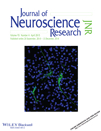- Submit a Protocol
- Receive Our Alerts
- EN
- EN - English
- CN - 中文
- Protocols
- Articles and Issues
- For Authors
- About
- Become a Reviewer
- EN - English
- CN - 中文
- Home
- Protocols
- Articles and Issues
- For Authors
- About
- Become a Reviewer
Locomotor Coordination Assay in Rats
Published: Vol 5, Iss 22, Nov 20, 2015 DOI: 10.21769/BioProtoc.1655 Views: 8911
Reviewed by: Soyun KimTifany DesprezAnonymous reviewer(s)

Protocol Collections
Comprehensive collections of detailed, peer-reviewed protocols focusing on specific topics
Related protocols
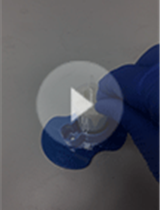
Evaluating Working Memory on a T-maze in Male Rats
Ahmed M. Hussein [...] Volker Korz
Jul 20, 2018 9333 Views
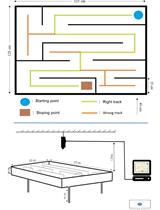
Classic Labyrinth Test for Neurobehavioral Evaluation in Wistar Rats
Salim Gasmi
Sep 20, 2018 6121 Views
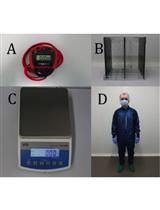
Consummatory Successive Negative Contrast in Rats
Ana María Jiménez-García [...] Ignacio Morón
Apr 5, 2019 4163 Views
Abstract
Neonatal hypoxia-ischemia (HI) affects 60% of low birth weight infants and up to 40% of preterm births. Cell death and brain injury after HI have been shown to cause long-lasting neurological deficits. Two motor coordination tests on rats that had been exposed to HI on postnatal day 7 (P7) showed that HI in the P7 rat is associated with significant motor coordination impairment. These results call attention to the risks associated with perinatal ischemia and the need for proper treatment to reverse HI-induced deleterious effects.
Keywords: Motor coordinationMaterials and Reagents
- Rats
Equipment
Note: Both rod and incline wire mesh are self-made from supplies bought at hardware store.
- Rod (30.0 cm L x 1.0 cm)
- Wire mesh (69.5 cm W x 45 cm L with 3 cm gaps)
Procedure
Motor coordination is assessed 21 days (P28) after HI insult [see Vannucci et al. (1999) for a description of HI protocol] as modified by us (Ferrari et al., 2010). Briefly, pregnant Wistar rat dams at gestational age E17 are housed in 12 h light-dark cycle with ad libitum access to food and water. The day of birth is postnatal day 0 (P0) and on P1 the litters are culled to 10 pups per dam and randomly mixed amongst dams to yield 20 pups per experiment. On day P7 all pups are removed from dams, weighed, sexed and randomly assigned to a group: sham- or HI-treated. They are then anesthetized and the left carotid artery isolated and permanently ligated. Sham pups are only anesthetized, an incision is made, immediately sutured and the wound cleaned without any further manipulation. Upon recovery, pups are returned to dams for 90 min and then they are removed and exposed to 8% oxygen for 90 min at which point they are returned to dams.
- Bar holding test and wire mesh ascending test
At P21 the pups are weaned and randomly separated into 5 pups per cage. All behavioral training and testing is carried between 8 am and 4 pm, and pups are brought to the testing room at least 30 min prior to the motor evaluations in order to minimize stress-related confounds. Each pup is trained 5 times per day for 3 consecutive days prior to each one of the two tests. On the day of testing, each test is performed with five separate trials per animal with a resting time of 5 min between trials. For the bar holding test, the pups spend their resting time in their home cage and for the wire mesh ascending test, the pups spend their resting time in the enclosed platform at the top of the mesh. All pups are placed back in their original cages immediately after each training and testing event. - Bar holding test
As previously described by Tchekalarova et al. (2005) and slightly modified by Ferrari et al. (2010) and Infante et al. (2013), pups are allowed to grasp a wooden bar of 1cm in diameter and 30 cm long that is suspended 50 cm above a padded soft surface. The time spent on the bar grasping bar with forelimbs is measured for a maximum of 120 sec. Results shown are an average of the 5 recordings per pup (Sham, n=11; HI, n=23). This assay addresses motor coordination and function impairment. - Wire mesh ascending test
As previously described (Tchekalarova et al., 2005; Thonhoff et al., 2007; Ferrari et al., 2010; Infante et al., 2013), a pup is placed at the bottom of a mesh and the time that it takes a pup to ascend the mesh is measured for up to 120 sec. The 1 cm thick plastic mesh is 45 cm long and 15 cm wide and is placed at an angle of 70° in contact with an elevated enclosed platform at the top and a padded soft surface at the bottom. As a stimulus to ascend, the littermates are placed on the enclosed platform above and allowed to acclimatize to the surroundings for 5 min before testing. Results shown are an average of the 5 recordings per pup (Sham, n=19; HI, n=25). This assay addresses both motor coordination impairment and social drive.
Representative data
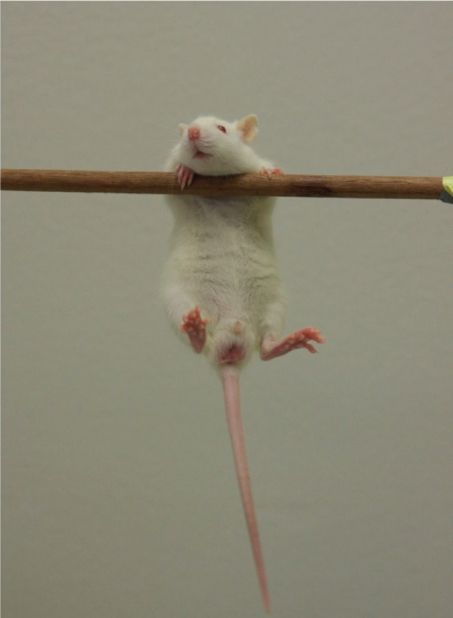
Figure 1. Bar holding test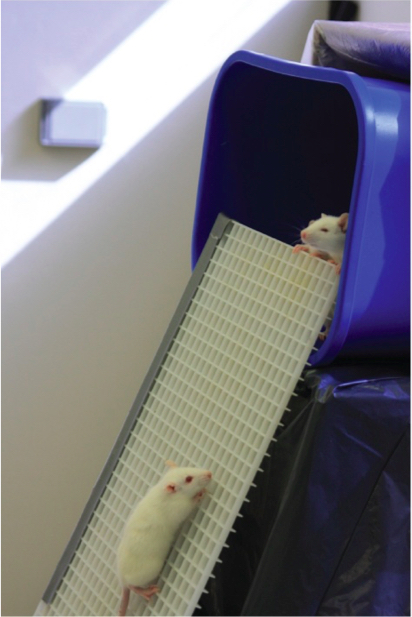
Figure 2. Wire mesh ascending test 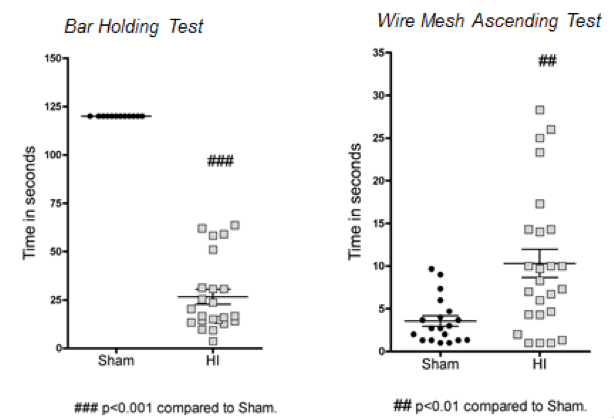
Figure 3. HI impairs motor coordination (Ferrari et al., 2010)
Notes
- As with all behavioral experiments animals must be handled daily by the single individual performing the evaluations. The testing room must be quiet and only the individual performing the evaluations should be in the room.
- When doing the wire mesh ascending test, it is vital that there be siblings at the top to provide motivation in order to get more homogeneous results.
Acknowledgments
This work was supported by Department of Defense, NIEHS and NICHD.
References
- Ferrari, D. C., Nesic, O. B. and Perez-Polo, J. R. (2010). Oxygen resuscitation does not ameliorate neonatal hypoxia/ischemia-induced cerebral edema. J Neurosci Res 88(9): 2056-2065.
- Infante, S. K., Rea, H. C. and Perez-Polo, J. R. (2013). Transgenerational effects of neonatal hypoxia-ischemia in progeny. Int J Dev Neurosci 31(6): 398-405.
- Tchekalarova, J., Kubova, H. and Mares, P. (2005). Postnatal caffeine exposure: effects on motor skills and locomotor activity during ontogenesis. Behav Brain Res 160(1): 99-106.
- Thonhoff, J. R., Jordan, P. M., Karam, J. R., Bassett, B. L. and Wu, P. (2007). Identification of early disease progression in an ALS rat model. Neurosci Lett 415(3): 264-268.
- Vannucci, R. C., Connor, J. R., Mauger, D. T., Palmer, C., Smith, M. B., Towfighi, J. and Vannucci, S. J. (1999). Rat model of perinatal hypoxic-ischemic brain damage. J Neurosci Res 55(2): 158-163.
Article Information
Copyright
© 2015 The Authors; exclusive licensee Bio-protocol LLC.
How to cite
Perez-Polo, J. R., Rea, H. C. and Infante, S. K. (2015). Locomotor Coordination Assay in Rats. Bio-protocol 5(22): e1655. DOI: 10.21769/BioProtoc.1655.
Category
Neuroscience > Behavioral neuroscience > Animal model
Do you have any questions about this protocol?
Post your question to gather feedback from the community. We will also invite the authors of this article to respond.
Tips for asking effective questions
+ Description
Write a detailed description. Include all information that will help others answer your question including experimental processes, conditions, and relevant images.
Share
Bluesky
X
Copy link



